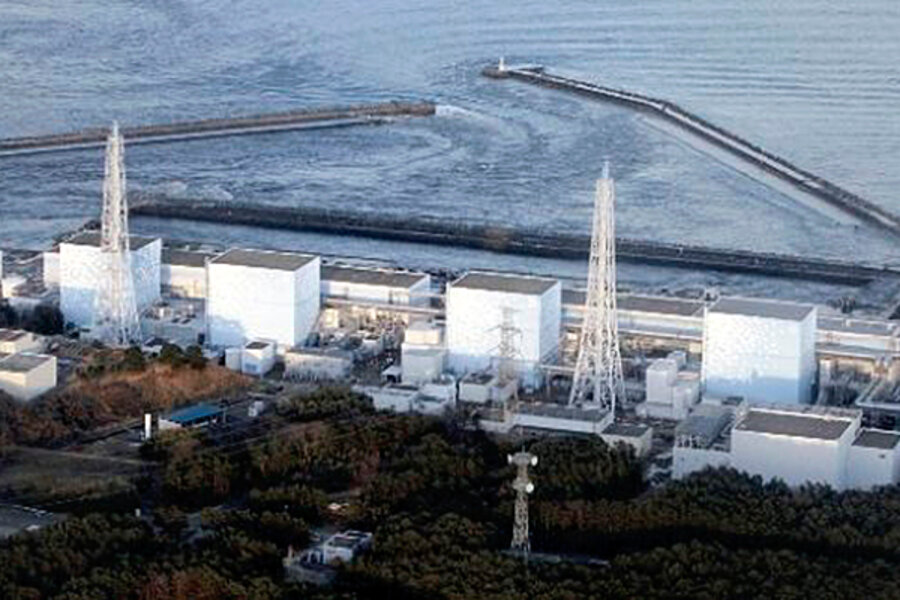Why earthquake-prone Japan relies on nuclear power
Nuclear energy provides an estimated 30 percent of electricity in Japan, despite it being one of the world's most seismically volatile nations.
Why? Nuclear power is increasingly seen as a way for Japan to reduce dependence on fossil fuels. That's the same reason why President Obama has also been pushing the US to build its first nuclear power plant in almost three decades. In his 2010 State of the Union address, he called for "a new generation of safe, clean nuclear power plants."
But as shown by the unfolding nuclear crisis in Japan, with two reactors at the Fukushima Daiichi Nuclear Power Station suffering explosions since Friday's massive earthquake knocked out cooling systems at the plant, there is simply no easy solution to humanity's need for energy. While fossil fuel raises concerns of climate change, nuclear energy raises the specter of radioactive contamination.
"Japan's debate closely mirrors those worldwide, as governments highlight nuclear power as an easier way to cut carbon emissions than boosting wind and solar power," the Monitor wrote a year ago in the article "Earthquake prone Japan sees green in new nuclear power plants."
Nuclear role in cutting carbon
Japan has touted nuclear power as key to reducing carbon emissions to 75 percent of 1990 levels by 2020. The public remains wary about the push, with one poll showing that 54 percent of the population feels anxious or uneasy about nuclear power. Shunsuke Kondo, chairman of Japan's Atomic Energy Commission, told the Monitor then that his nation's nuclear power plants were built to withstand all but a "once in 10,000 year" earthquake.
Tragically, that's exactly what hit Friday when an 8.9-magnitude temblor rocked the nation's northeast coast and sent a 30-foot high tsunami crashing inland, knocking out electricity at Fukushima Daiichi Nuclear Power Station and causing cooling systems to fail in at least three reactors.
Nuclear plants also provide an estimated 20 percent of US power, with Obama recently pledging $8 billion in loan guarantees for the construction of the first nuclear power plant in the US since 1979, the year of the Three Mile Island meltdown. Proposals are currently being heard for 20 new reactors to be built over the next 15 to 20 years.
According to the Nuclear Regulatory Commission, there are currently 104 licensed nuclear power plants, with eight sitting in the earthquake-prone West Coast states of Washington, California, and Arizona. (Here's a map of reactors across the US.) Two of those plants in California sit especially close to fault lines.
The New York Times today reports that "most of the nuclear plants in the United States share some or all of the risk factors that played a role at Fukushima Daiichi: locations on tsunami-prone coastlines or near earthquake faults, aging plants and backup electrical systems that rely on diesel generators and batteries that could fail in extreme circumstances."
Overreacting to the nuclear crisis?
Even a year ago, as the Monitor reported, Japan's earthquake-prone geology caused concern among activists and raised the specter of a quake-induced Chernobyl. Comparisons to Ukraine's 1986 disaster have been stated repeatedly in recent days, despite officials downplaying such a scenario.
The Wall Street Journal's Op-Ed page has criticized American media for "overreacting" to the nuclear crisis in Japan. "Unlike the Soviets at Chernobyl, the Japanese have been taking sensible precautions like evacuating people near the plants and handing out iodine pills even if they may never be needed. These precautions increase public worry, but better to take them even if they prove to be unnecessary," the WSJ said.
"We should learn from the Japanese nuclear crisis, not let it feed a political panic over nuclear power in general," the Journal said.






